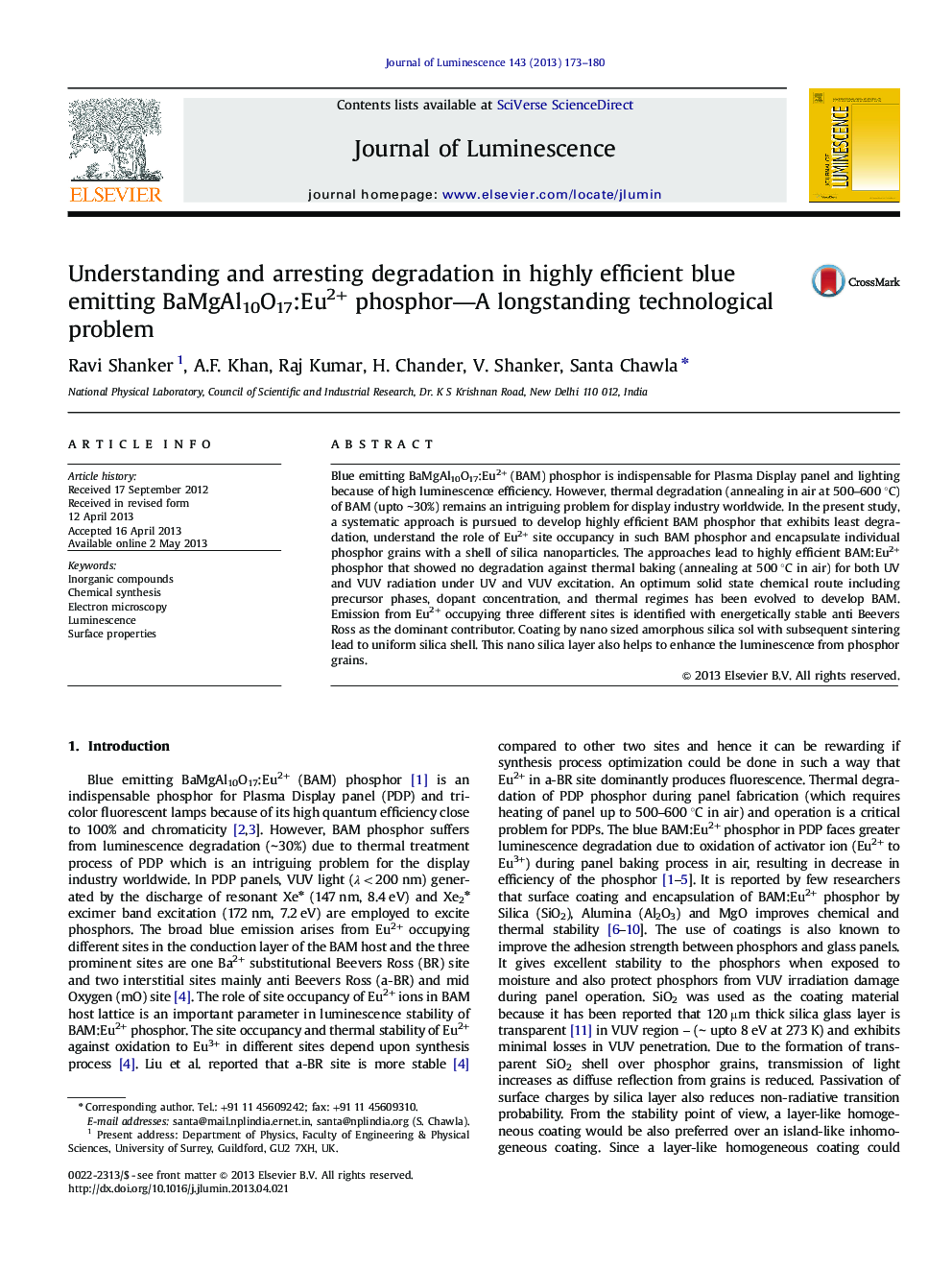| Article ID | Journal | Published Year | Pages | File Type |
|---|---|---|---|---|
| 5400445 | Journal of Luminescence | 2013 | 8 Pages |
Abstract
Blue emitting BaMgAl10O17:Eu2+ (BAM) phosphor is indispensable for Plasma Display panel and lighting because of high luminescence efficiency. However, thermal degradation (annealing in air at 500-600 °C) of BAM (upto â¼30%) remains an intriguing problem for display industry worldwide. In the present study, a systematic approach is pursued to develop highly efficient BAM phosphor that exhibits least degradation, understand the role of Eu2+ site occupancy in such BAM phosphor and encapsulate individual phosphor grains with a shell of silica nanoparticles. The approaches lead to highly efficient BAM:Eu2+ phosphor that showed no degradation against thermal baking (annealing at 500 °C in air) for both UV and VUV radiation under UV and VUV excitation. An optimum solid state chemical route including precursor phases, dopant concentration, and thermal regimes has been evolved to develop BAM. Emission from Eu2+ occupying three different sites is identified with energetically stable anti Beevers Ross as the dominant contributor. Coating by nano sized amorphous silica sol with subsequent sintering lead to uniform silica shell. This nano silica layer also helps to enhance the luminescence from phosphor grains.
Related Topics
Physical Sciences and Engineering
Chemistry
Physical and Theoretical Chemistry
Authors
Ravi Shanker, A.F. Khan, Raj Kumar, H. Chander, V. Shanker, Santa Chawla,
